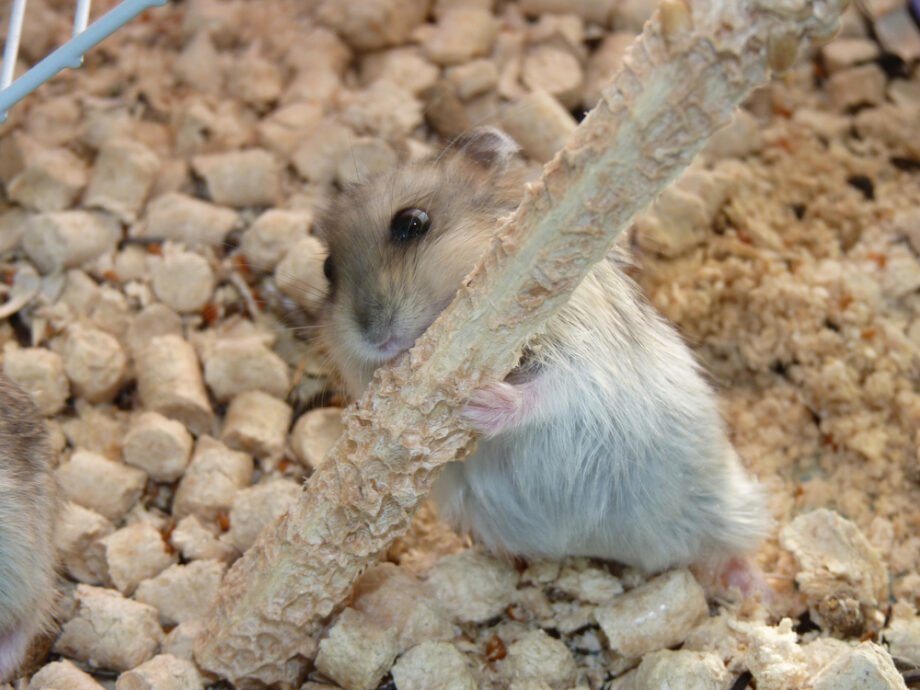Why Chew Toys are Important for Hamsters
Hamsters are small, active pets that love to explore and play. One of their favorite activities is chewing, which is not only a natural behavior for them but also essential for their overall well-being. Providing your hamster with appropriate chew toys is crucial for their dental health, mental stimulation, and overall enrichment.
The Benefits of Chew Toys for Hamsters
1. Dental Health: Hamsters have continuously growing teeth, and chewing helps to wear them down. Without proper chew toys, their teeth can become overgrown, leading to dental problems and discomfort. Chew toys provide a safe and appropriate outlet for your hamster to keep their teeth in good condition.
2. Mental Stimulation: Hamsters are intelligent creatures that require mental stimulation to prevent boredom and promote a healthy mind. Chew toys offer a form of enrichment by engaging their natural instincts and providing a challenge. They can spend hours exploring and gnawing on different textures, keeping them mentally engaged and entertained.
3. Preventing Destructive Behavior: Hamsters have a natural urge to chew, and without suitable chew toys, they may resort to chewing on inappropriate items such as cage bars, plastic accessories, or even their own fur. Providing them with a variety of chew toys helps redirect their chewing behavior to appropriate objects, preventing destructive habits.
Choosing Safe and Natural Chew Toys
When selecting chew toys for your hamster, it’s important to prioritize their safety. Here are some guidelines to follow:
1. Avoid Toxic Materials: Make sure the chew toys you choose are made from safe and non-toxic materials. Avoid toys with paints, dyes, or glues that could be harmful if ingested. Opt for toys made from natural materials such as wood, hay, or sisal.
2. Size and Texture: Choose chew toys that are appropriate for your hamster’s size and breed. The toys should be small enough for them to hold and gnaw on comfortably. Additionally, select toys with different textures to provide variety and cater to your hamster’s preferences.
3. Edible Options: Consider offering your hamster some edible chew toys as a special treat. Certain woods, such as apple, pear, or willow, are safe for hamsters to chew on and can provide additional nutritional benefits.
DIY Chew Toys for Hamsters
If you’re feeling creative, you can also make your own chew toys for your hamster. Here are a few simple DIY ideas:
1. Cardboard Tubes: Empty toilet paper or paper towel rolls make great chew toys for hamsters. You can stuff them with hay or treats to make them even more enticing.
2. Wicker Balls: Take a small wicker ball and stuff it with hay or dried herbs. This provides both a chewing and foraging experience for your hamster.
3. Wooden Blocks: Find some untreated wooden blocks or branches and create a safe chewing toy for your hamster. Make sure to sand down any rough edges and avoid using toxic woods.
Enrichment through Toy Selection
Offering a variety of chew toys is essential for hamster enrichment. Here are a few tips to keep in mind:
1. Rotate Toys: Hamsters can quickly lose interest in their toys, so it’s important to rotate them regularly. Introduce new toys and remove others to keep their environment fresh and exciting.
2. Observe Preferences: Pay attention to your hamster’s preferences when it comes to chew toys. Some may prefer softer textures, while others enjoy gnawing on harder materials. Offer a selection and observe which toys they gravitate towards.
3. Interactive Toys: In addition to chew toys, consider interactive toys that provide mental stimulation and physical exercise. Hamster wheels, tunnels, and puzzle toys are great options to keep your furry friend active and engaged.
Remember, providing your hamster with a variety of safe and natural chew toys is not only essential for their dental health but also promotes their overall well-being. It’s a simple and enjoyable way to keep your hamster happy and entertained!


Leave a Reply